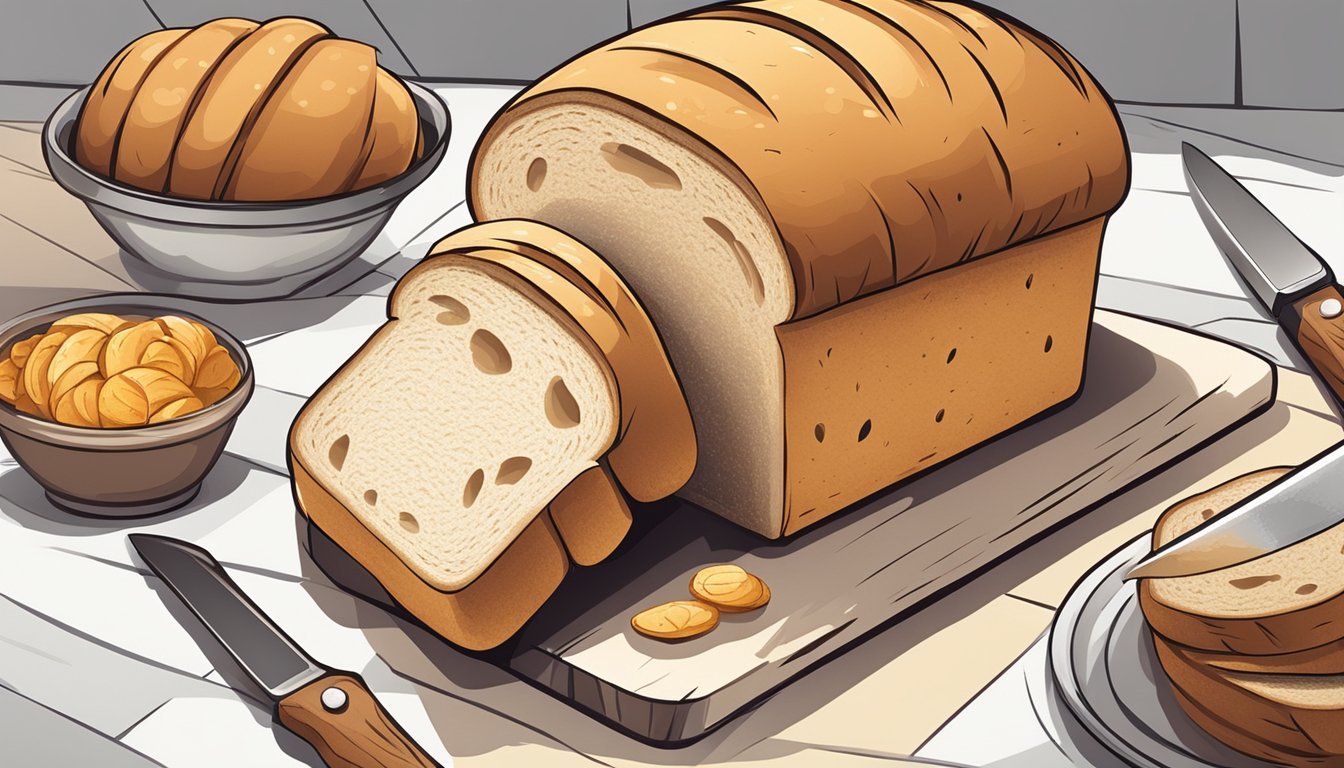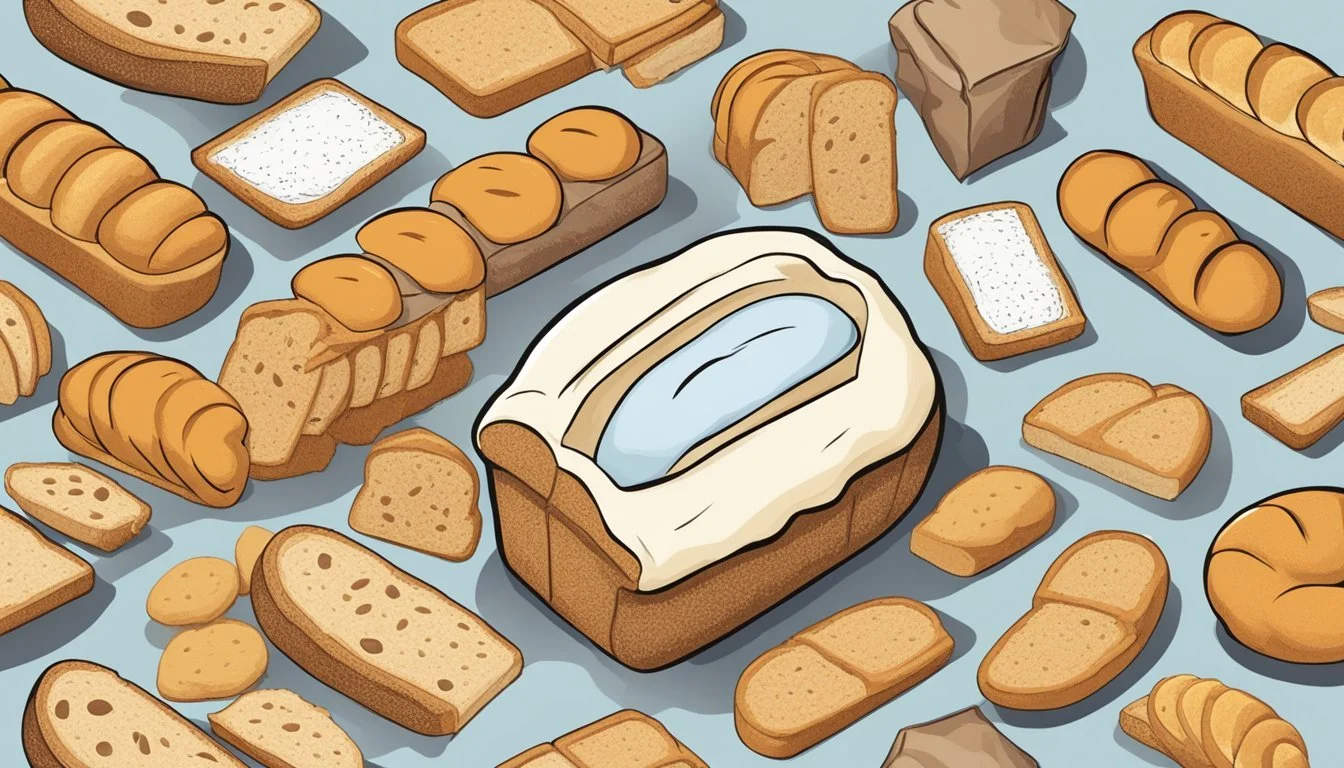How Many Slices of Bread Should You Eat Per Day?
Understanding Daily Intake Recommendations
Determining the right amount of bread (What wine goes well with bread?) intake per day involves considering individual dietary needs, health goals, and nutritional balance. Bread is a staple in many diets and provides a convenient source of carbohydrates which are essential for energy. It also offers other nutrients such as fiber, if opting for whole-grain varieties, and B vitamins. However, not all breads are created equal; white bread and other refined-grain products are less beneficial than their whole-grain counterparts because refining process strips away fiber and important nutrients.
Nutritional guidelines suggest portion control is key to integrating bread into a balanced diet. The United States Department of Agriculture (USDA) recommends that the grains in a diet, which includes bread, should be proportional to the individual’s overall caloric needs and physical activity level. For instance, moderately active women and older adults generally require fewer servings of grains compared to active men and younger adults. It is advised that at least half of the grain servings in the diet come from whole grains to maximize the intake of fiber and other nutrients.
While the exact number of bread servings may vary, it is a common recommendation for adults to consume roughly 6 ounces of grains daily, with at least half being whole grains, equating to about 3 ounces of whole-grain bread. This portion aligns with a diet providing ample nutrients while mitigating the potential for excessive calorie intake. As dietary needs differ from person to person, these servings are a starting point and should be personalized according to individual health requirements and advice from nutrition professionals.
Nutritional Value of Bread
When considering the nutritional value of bread, it's essential to understand the content of carbohydrates, fiber, vitamins, and minerals, as well as how these components vary between different types of bread.
Carbohydrates and Fiber
Bread is a staple of the grain group and is primarily composed of carbohydrates, providing a quick source of energy. Whole grain bread is particularly rich in fiber, which aids in digestion and has been associated with various health benefits.
Whole grain bread: Typically contains more fiber and nutrients than white bread due to the inclusion of the entire grain kernel.
White bread: Often made from refined flour where the grain's bran and germ are removed, which reduces the fiber content.
Vitamins and Minerals
Bread can be a good source of several vitamins and minerals, essential for maintaining health. The nutritional profile varies, with whole grain breads generally offering a more diverse range of micronutrients.
Iron: Essential for blood production and commonly enriched in white bread.
Magnesium and Zinc: Found in whole grains, contributing to various bodily functions including immune response and metabolic processes.
Vitamins B (such as Thiamine and Folate): Play a vital role in energy metabolism, and are present in higher amounts in whole grain breads.
Differences Between Bread Types
The nutritional quality of bread significantly differs between types, with whole grain options typically being the healthier choice over white bread due to their comprehensive nutrient profile.
Whole grain bread includes various types of grains and seeds which contribute to a higher content of nutrients like fiber, iron, magnesium, zinc, and B vitamins.
White bread, while often enriched to supplement the lost nutrients during the refining process, usually contains fewer of these nutrients compared to its whole grain counterparts.
By choosing whole grain bread, individuals can benefit from a denser nutritional profile, contributing to a well-rounded diet.
Health Implications
Eating bread can affect various aspects of health including weight management and blood sugar levels, particularly due to its carbohydrate content and presence of gluten. How bread impacts health is closely tied to the type of bread consumed—whole grain versus refined—and individual dietary needs.
Weight Management
People managing their weight should consider bread's role in their diet. Bread, especially when made from refined grains, can be high in calories with minimal nutritional benefit, potentially leading to weight gain if consumed in excess. On the other hand, bread that is high in dietary fiber from whole grains can promote a feeling of fullness, which may support weight loss efforts by reducing overall calorie intake.
Blood Sugar Control
For individuals with diabetes or pre-diabetes, consuming bread with a high glycemic index can cause spikes in blood sugar levels. A diet rich in whole grains, rather than refined grains, can help maintain steady blood sugar levels, which is critical in managing both type 2 diabetes and overall health. High-fiber bread options can slow the absorption of sugar into the bloodstream, aiding in blood sugar control.
Gluten Sensitivity and Celiac Disease
Bread typically contains gluten, a protein that can cause health issues for those with gluten intolerance or celiac disease. For these individuals, consuming gluten triggers an immune response that can damage the intestine, leading to serious health problems. Gluten-free bread options are essential for maintaining their gut health and preventing disease symptoms.
Gut Health
Bread can influence gut health, depending on the fiber intake associated with different types of bread. Breads rich in whole grains provide substantial dietary fiber, which is beneficial for digestive health. Adequate fiber intake from whole-grain bread can help promote regular bowel movements and prevent constipation, thereby supporting a healthy digestive system.
Dietary Guidelines and Serving Sizes
The United States Department of Agriculture (USDA) provides specific dietary guidelines regarding the consumption of grains, including bread. Serving sizes vary by age, sex, and level of physical activity, playing a critical role in ensuring a balanced diet.
General Recommendations
According to the USDA, adults need a certain number of grain servings each day, with a single serving often equating to one slice of bread or a half-cup of cooked rice or pasta. The recommendations for a moderately active individual are as follows:
Women aged 19 to 50: six servings of grains per day
Women over 50: five servings of grains per day
Men aged 19 to 30: eight servings of grains per day
Men aged 31 and older: seven servings of grains per day
These servings form part of a well-balanced diet and are essential for maintaining proper health.
Special Dietary Considerations
Children and individuals with differing levels of physical activity may require different grain servings. Those who are more physically active may need more servings to meet their energy needs, while less active individuals and young children will require fewer servings. A balanced diet for children should adhere to USDA's age-appropriate guidelines, while also considering the moderation needed to avoid excessive intake.
For those with specific health conditions or dietary requirements, the standard serving sizes may be adjusted. It is important for these individuals to consult with a healthcare professional to determine their unique dietary needs within the framework of a balanced diet.
Choosing the Right Bread for Your Diet
When selecting bread, one should consider nutritional content, focusing on whole grains and understanding labeling to make informed choices that fit dietary needs and goals.
Whole Grains vs. Refined Grains
Whole grain breads are made from flour that includes all parts of the grain: the bran, germ, and endosperm. Whole grain breads are nutritionally superior to refined grains, which have been stripped of the bran and germ, leading to a loss of dietary fiber, vitamins, and minerals. Whole-wheat bread, a type of whole grain bread, specifically uses whole-wheat flour. It is important to differentiate between whole wheat and multi-grain products, as multi-grain simply indicates the inclusion of more than one type of grain, which may not necessarily be whole.
Whole Grain Bread: Contains all parts of the grain, offering higher fiber and nutrients.
Refined Grain Bread: Missing the bran and germ, lower in fiber and nutrients.
Understanding Labels
Reading labels is crucial to identifying healthy bread options. Ingredients are listed by quantity, from highest to lowest. A bread labeled whole grain or whole wheat should list "whole-grain flour" or "whole wheat flour" as the first ingredient. Avoid breads that list "wheat flour" (which is refined) or contain sweeteners like high-fructose corn syrup early in the list. For those with dietary restrictions, low carb, gluten-free bread, or sourdough bread might be valuable alternatives, but still require scrutiny of the ingredient list to assess their nutritional value.
First Ingredient: Look for "whole grain flour" or "whole wheat flour."
Sweeteners: Avoid bread with sweeteners like high-fructose corn syrup near the top of the ingredient list.
Alternative Bread Options
For individuals seeking alternatives to traditional wheat bread, options abound. Gluten-free bread caters to those with gluten intolerance or celiac disease. Often made from rice or almond flour, these breads can vary widely in nutrient density and should be chosen based on individual health needs. Low carb breads may substitute traditional flours with soy or almond meal, making them suitable for some low-carbohydrate diets. For the freshest options, one can source homemade bread or visit a local bakery to find breads like sourdough, which is fermented and may be easier to digest for some individuals.
Gluten-Free Bread: Good for those avoiding gluten, made from alternative flours like rice or almond.
Low Carb Bread: Made with soy or almond meal, fits into low-carbohydrate diets.
Local Bakery: Can offer freshly made sourdough and other artisan breads.
Practical Tips for a Healthy Bread Consumption
A sensible approach to consuming bread involves understanding its place in a balanced diet, managing portion sizes effectively, and being aware of alternative grain options.
Incorporating Bread in a Balanced Diet
One should aim to integrate bread into a diet that also includes vegetables, fruit, lean proteins, and healthy fats to ensure a full spectrum of nutrition. Whole grain breads, which are high in fiber, are preferable as they contribute to a healthy diet by improving digestion and providing a sustained energy source. Incorporating various grains like oats, barley, and brown rice can also diversify nutrient intake.
Managing Portion Sizes
Identifying the right portion size is crucial for a balanced intake of bread. It is recommended that adults consume:
6 to 8 servings of grains per day, where:
1 serving = 1 ounce = 1 slice of bread or 1/2 cup of cooked rice, pasta, or cereal
For accuracy in portion control, one might consider using measuring cups or a kitchen scale until they can reliably estimate serving sizes.
Bread Alternatives
When looking to reduce bread consumption or seeking variety, numerous alternatives exist beyond regular wheat bread. These options include:
Oats: A versatile grain that can be eaten as oatmeal or added to homemade bread for additional texture and nutrients.
Barley: A chewy, nutritious grain that is excellent in soups or salads.
Brown rice: A whole grain alternative that pairs well with lean proteins and vegetables for a complete meal.
Cereals: Opt for whole grain cereals with low added sugar for a healthier option.
Pasta: Integrating whole grain or legume-based pastas can be a satisfying substitute for bread.
By making educated choices on bread and its alternatives, one can enjoy a diverse and healthful diet.
Myths and Facts About Bread
In the discourse on healthy eating, bread often faces scrutiny. This section dismantles common myths and validates truths about bread, focusing on elements like gluten, carbohydrates, and their impact on well-being.
Common Misconceptions
Gluten: A prevalent misconception is that all bread causes bloating due to gluten—a protein found in wheat, barley, and rye. However, only individuals with gluten sensitivities or celiac disease typically experience this reaction. For others, bread without high-gluten content shouldn't cause bloating.
Carbs and Fat: Some believe that bread is universally high in carbs and fats, therefore detrimental to health. Actually, bread varies widely in carbohydrate and fat content. Whole-grain products can be part of a nutritious diet and offer health benefits.
Blood Sugar Levels: It is often thought that all bread rapidly spikes blood sugar levels. In reality, the glycemic index (GI) of bread can differ. For instance, whole-grain bread generally has a lower GI than white bread, affecting blood sugar levels less drastically.
Good vs. Bad: The idea that bread is inherently "good" or "bad" is too simplistic. The type of bread and individual dietary needs are crucial factors. Whole-grain bread, for example, contains nutrients beneficial for health, unlike some highly processed versions.
Fact-Checking Bread Claims
Nutritious: Bread can be nutritious. Whole-grain products include essential nutrients like dietary fiber, vitamins, and minerals. Boldly, whole-grain bread is associated with several health benefits, such as improved digestion and reduced risk of chronic diseases.
Health Benefits: While bread consumption isn't universally harmful, moderation is key, just as it is with other foods. Claims of bread's impact on health must consider the kind of bread and the individual's overall diet and level of physical activity. For a moderately active adult, a balanced intake would be approximately 6 servings for women and up to 8 servings for men per day, equating to roughly 1.5-2 thick slices for women and 2-3 slices for men respectively.
Whole-grain Products: It is not accurate to label all bread as lacking in nutritional value. Whole-grain breads often contain more nutrients and fiber compared to white breads, making them a healthier choice that aligns with maintaining well-being.
Harmful: To generalize that all bread is harmful would be misleading. The key is to choose bread with lower GI, higher fiber content, and minimal added sugars or saturated fats, ensuring it can fit into a balanced diet without negative implications on health.
Cultural and Historical Context of Bread
Bread is deeply rooted in cultural traditions and history, often serving as a staple food that is both a symbol and a source of sustenance across various societies.
Bread in Different Cultures
Bread takes on numerous forms and significances around the world, reflecting the cultural diversity and culinary creativity of people. In Western societies, bread typically comprises of refined white flour and is often a fixture at meal times. Middle Eastern cultures rely heavily on flatbreads like pita and naan, which are a significant part of meals and social rituals. On the other hand, rye bread is a staple in many Eastern European countries, valued for its hearty flavor and nutritional content. In Ethiopia, injera, a sourdough-risen flatbread with a unique, slightly spongy texture, is a core part of meals and serves as both a food and a utensil for scooping other dishes.
Evolution of Bread Consumption
Historically, the consumption of bread has evolved alongside the development of agriculture, with the cultivation of various grains leading to different types of bread. The earliest breads were likely made from a simple mix of ground grains and water, baked into flatbreads on hot stones. The ancient Egyptians are credited with the invention of sourdough, a technique of fermentation that leavened bread, creating a texture that more closely resembles modern loaves. The advent of industrial milling in the 19th century brought about the widespread availability of white flour, which altered bread consumption patterns significantly, favoring softer, lighter bread. The 20th century saw the mass production and distribution of pre-sliced white bread, blurring the lines between convenience and the cultural significance of bread-making.







